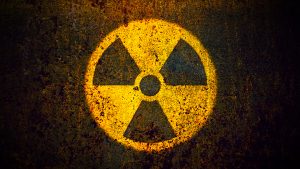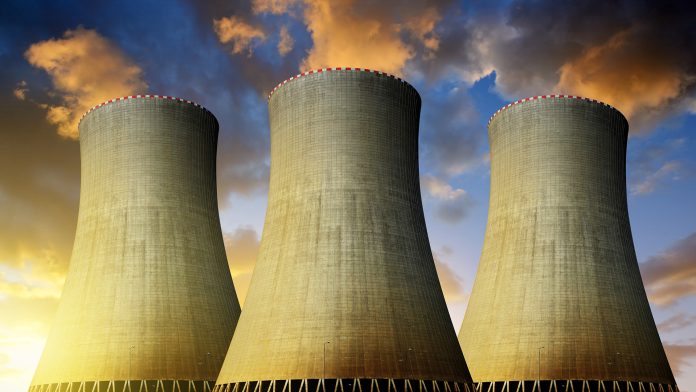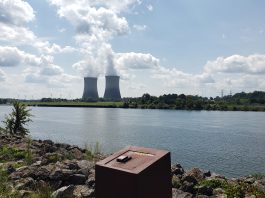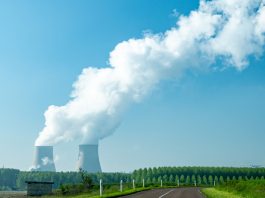Rebecca Tadesse and Gabriele Grassi, from the Division of Radioactive Waste Management and Decommissioning at the OECD Nuclear Energy Agency, discuss the importance of international collaboration for effective radioactive waste management.
Increasing numbers of countries are considering building nuclear power facilities to secure their energy supply and reduce carbon emissions. As a result, the effective management of radioactive waste generated by these facilities has received renewed attention.
The number of countries expressing interest in nuclear energy programmes rose during the 2020s, with 30 countries signing on to a declaration made in 2023 to triple nuclear energy capacity by 2050 as part of their net zero commitments. Meanwhile, the development of a greater variety of new and advanced nuclear technologies is accelerating. This progress requires scientists, regulators, disposal facility developers and operators, policymakers, and other experts to reassess how to manage the life cycle of potentially new forms of spent nuclear fuel (SNF) and radioactive waste.
Since the start of civilian nuclear energy over 70 years ago, the sector has responsibly addressed the entire life cycle of its materials. Because of the global nature of the industry, the urgency to develop effective low-carbon energy solutions, and the speed of technological innovation, managing radioactive waste management is most effectively pursued through international collaboration. Such collaboration involves sharing information, harmonising approaches, and avoiding duplication of work. The Nuclear Energy Agency (NEA) has been active in radioactive waste management research, technology and policy since 1958, and is committed to supporting its 34 member countries in this long-term endeavour.
Spent nuclear fuel and high-level radioactive waste
Radioactive materials produced in nuclear reactors are classified within each national framework, typically based on their radioactivity and ‘decay’ time: from very low-level waste to low-level waste, intermediate-level waste and high-level waste (HLW). Much of the waste’s radioactivity fades away, or decays, over a few centuries but a very small fraction remains hazardous for thousands of years.
The SNF is stored in interim storage facilities – wet pools and dry casks – pending final disposal or in reprocessing plants that recover valuable material from the spent fuel for recycling into new nuclear fuel. Smaller quantities of HLW remain after reprocessing and require long-term management. The extended decay times of SNF/HLW has sparked debates in some parts of the world about the long-term sustainability of nuclear energy. However, the global scientific consensus is clear: the permanent disposal of SNF/HLW in a deep geological repository (DGR) is a safe and effective solution. By isolating radioactive waste from the biosphere for millennia, DGRs provide a reliable method for ensuring environmental and human safety over the long term.¹
Deep geological disposal
DGRs are engineered tunnels excavated several hundred metres underground in carefully selected host rock formations. These repositories house SNF/HLW within secure cannisters. Decades of research worldwide have led independent national regulators, based on internationally accepted radiological protection standards, to endorse DGRs as the optimal solution for the permanent disposal of SNF/HLW.
DGRs are constructed within host rocks, such as clay, granite or salt formations, that provide a stable geological environment and ‘passive safety’ for waste disposal. This ensures that no human intervention is needed over the centuries to ensure the waste remains properly entombed and undisturbed. Extensive geological studies have examined these formations to understand their past behaviour over hundreds of thousands, even millions, of years.

In industrial terms, the volume of SNF/HLW is relatively small. For example, the United States, which has the largest number of nuclear power reactors in the world, has produced a cumulative total of about 90,000 metric tons of spent fuel since the 1950s. This amount could fit on a football field at a depth of less than 10m.²
Work towards establishing DGRs has progressed in various countries, with many building underground research laboratories (URLs) to carry out experiments in rock formations similar to those intended for DGRs. Research has focused on topics such as the migration of radionuclides and gases in rock formations, the self-healing behaviour of clay host rock, heat tests, methods of fracture detection, and changes in geochemical conditions near DGR tunnels. These studies have also tested technologies to be used during DGR operation and eventual closure.
Finland is the country that has so far made the most progress in its DGR programme, with the Onkalo site on Olkiluoto Island expected to become operational in the upcoming years.³ This facility currently comprises 10km of tunnels to a depth of approximately 450m, with an additional 40km planned over the next century as the repository becomes fully operational.
International experience, such as in Finland, highlights that high-quality stakeholder engagement and well-designed public policies are key to successful DGR programmes. Countries, such as Canada, France, Sweden and Switzerland, are also advancing their DGR programmes with effective stakeholder involvement and by identifying suitable sites and establishing the required regulatory and legal frameworks.
Securing public trust and obtaining a ‘social licence’ for the repository’s construction and operation is crucial. A DGR safely isolates radioactive waste for tens of thousands of years. However, this extended timeframe poses unique challenges, such as how to communicate the repository’s importance and purpose to future generations. Advances in science and technology may also prompt future societies to enhance repository features or modify its operation.
From idea to implementation
Extensive and transparent dialogue with all stakeholders is indispensable when planning a DGR, from agreeing that it is the country’s solution of choice to finding a site and building, filling and maintaining it. Stakeholder engagement can take many forms, including expert consultations, commissions, community conferences, public hearings and parliamentary sessions. By encouraging open and ongoing communication, countries can refine their technical choices while building societal trust, thereby minimising the risk of costly policy U-turns over time. ¹
A decision to build a DGR needs careful planning and the creation of national policies and regulatory frameworks. This includes planning for the costs of a project that will outlive any of the politicians, scientists, and experts currently involved. Key considerations include determining who will bear the costs of radioactive waste management along the entire life cycle, including if, and when, the government as guarantor of last resort will take on its costs and responsibility.⁴ Licensing for a DGR, meanwhile, entails regular updates to the ‘safety case’ – a comprehensive demonstration of safety. These updates integrate new research findings, advancements in site characterisation, and refinements to the repository’s design. To support this, the NEA maintains a database of features, events and processes (FEP) that can inform the scenarios to be examined within the safety case.
While a DGR is designed to provide passive safety, the possibility of inadvertent human disturbance in the far future remains a concern, for example through drilling for underground resources.¹ To mitigate this risk, the sites of DGRs are specifically selected for their lack of natural resources. Additionally, the safety case rigorously examines the resilience of a DGR to such a scenario. Efforts are also underway to institutionalise the memory of DGR sites for future generations, both at a national and local scale. Monuments, museums or community centres can serve as enduring reminders of a repository’s significance, enabling the safe transfer of knowledge across centuries.
The uncertainty that is inherent in such a long-running programme means that flexibility is needed throughout the decision-making process, including the possibility of reversing decisions. This can mean, for example, ensuring the ability to retrieve the waste already emplaced in the DGR. This would provide future generations with the ability to make their own informed decisions about the site and the management of SNF/HLW, taking into account advancements in technology and changes in political and societal views.
New nuclear technologies
The growing interest in nuclear energy as a low-carbon source of power and heat has led to the development of a multiplicity of new reactor concepts. Unlike the past, when public sector companies traditionally dominated the nuclear sector, the private sector, including startups backed by venture capital, is heavily invested in new technologies. Among these innovations are Generation IV reactor technologies and small modular reactors (SMRs). SMRs are designed to be portable, factory-made and have output of less than 300 megawatts electric (MWe). Major technology companies have expressed interest in SMRs to supply data centres, whose energy requirements are growing sharply for in-demand applications like artificial intelligence. New nuclear technologies are also particularly relevant for hard-to-abate sectors, such as mining in remote or off-grid locations, transportation, and a variety of industrial processes requiring both power and heat.⁵
Many of these emerging technologies use new materials and can require different setups in terms of siting, licensing, supply chain, financing, and fuel cycle management. This evolution significantly impacts radioactive waste management. Addressing these challenges during the design phase is critical, since the new reactor types will produce SNF/HLW that will eventually need to be disposed of in repositories as DGRs.
To support this effort, the NEA has developed a new international research project entitled Waste Integration for Small and Advanced Reactor Designs (WISARD), which will investigate how new reactor types will require innovative solutions in spent fuel and waste storage, treatment and recycling, transportation, and disposal.⁶ By addressing these questions in the early design phase of new nuclear technologies, it is possible to avoid costly design changes later in the development phase and build public confidence in the sustainability of the innovations. The project is set to launch in early 2025 and adds to a range of initiatives and platforms that the NEA provides to facilitate the sharing of information between countries, sectors and industries to continuously advance the understanding of radioactive waste management and the management and final disposal of HLW.
References
- NEA (2020), Management and Disposal of High-Level Radioactive Waste: Global Progress and Solutions, OECD Publishing, Paris, www.oecd-nea.org/jcms/pl_32567/management-and-disposal-of-high-level-radioactive-waste-global-progress-and-solutions (accessed 7 January 2025)
- DoE (2020), Five Fast Facts about Spent Nuclear Fuel, www.energy.gov/ne/articles/5-fast-facts-about-spent-nuclear-fuel (accessed 7 January 2025)
- Posiva (2024), “Introducing Onkalo and its principle of operation”, Posiva website, www.posiva.fi/en/index/news/pressreleasesstockexchangereleases/2024/thisisonkaloandthisishowitworks.html (accessed 7 January 2025)
- NEA (2023), Ensuring the Adequacy of Funding for Decommissioning and Radioactive Waste Management, OECD Publishing, Paris, www.oecd-nea.org/jcms/pl_59705/ensuring-the-adequacy-of-funding-for-decommissioning-and-radioactive-waste-management (accessed 7 January 2025)
- NEA (2024), The NEA Small Modular Reactor Dashboard: Second Edition, OECD Publishing, Paris, www.oecd-nea.org/jcms/pl_73678/nea-small-modular-reactor-smr-dashboard (accessed 7 January 2025)
- NEA, (2024a), “NEA Project on Waste Integration for Small and Advanced Reactor Designs (WISARD)”, https://www.oecd-nea.org/wisard (accessed 7 January 2025)
Please note, this article will also appear in the 21st edition of our quarterly publication.









